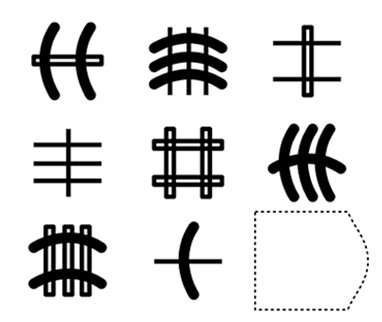Can't solve a riddle? The answer might lie in knowing what doesn't work

Ever get stuck trying to solve a puzzle?
You look for a pattern, or a rule, and you just can't spot it. So you back up and start over.
That's your brain recognizing that your current strategy isn't working, and that you need a new way to solve the problem, according to new research from the University of Washington. With the help of about 200 puzzle-takers, a computer model and functional MRI (fMRI) images, researchers have learned more about the processes of reasoning and decision-making, pinpointing the brain pathway that springs into action when problem-solving goes south.
"There are two fundamental ways your brain can steer you through life—toward things that are good, or away from things that aren't working out," said Chantel Prat, associate professor of psychology and co-author of the new study, published Feb. 23 in the journal Cognitive Science. "Because these processes are happening beneath the hood, you're not necessarily aware of how much driving one or the other is doing."
Using a decision-making task developed by Michael Frank at Brown University, the researchers measured exactly how much "steering" in each person's brain involved learning to move toward rewarding things as opposed to away from less-rewarding things. Prat and her co-authors were focused on understanding what makes someone good at problem-solving.
The research team first developed a computer model that specified the series of steps they believed were required for solving the Raven's Advanced Performance Matrices (Raven's)—a standard lab test made of puzzles like the one above. To succeed, the puzzle-taker must identify patterns and predict the next image in the sequence. The model essentially describes the four steps people take to solve a puzzle:
- Identify a key feature in a pattern;
- Figure out where that feature appears in the sequence;
- Come up with a rule for manipulating the feature;
- Check whether the rule holds true for the entire pattern.
At each step, the model evaluated whether it was making progress. When the model was given real problems to solve, it performed best when it was able to steer away from the features and strategies that weren't helping it make progress. According to the authors, this ability to know when your "train of thought is on the wrong track" was central to finding the correct answer.
The next step was to see whether this was true in people. To do so, the team had three groups of participants solve puzzles in three different experiments. In the first, they solved the original set of Raven's problems using a paper-and-pencil test, along with Frank's test which separately measured their ability to "choose" the best options and to "avoid" the worse options. Their results suggested that only the ability to "avoid" the worst options related to problem-solving success. There was no relation between one's ability to recognize the best choice in the decision-making test, and to solve the puzzles effectively.
The second experiment replaced the paper-and-pencil version of the puzzles with a shorter, computerized version of the task that could also be implemented in an MRI brain-scanning environment. These results confirmed that those who were best at avoiding the worse options in the decision-making task were also the best problem solvers.
The final group of participants completed the computerized puzzles while having their brain activity recorded using fMRI. Based on the model, the researchers gauged which parts of the brain would drive problem-solving success. They zeroed in on the basal ganglia—what Prat calls the "executive assistant" to the prefrontal cortex, or "CEO" of the brain. The basal ganglia assist the prefrontal cortex in deciding which action to take using parallel paths: one that turns the volume "up" on information it believes is relevant, and another that turns the volume "down" on signals it believes to be irrelevant. The "choose" and "avoid" behaviors associated with Frank's decision-making test relate to the functioning of these two pathways. Results from this experiment suggest that the process of "turning down the volume" in the basal ganglia predicted how successful participants were at solving the puzzles.
"Our brains have parallel learning systems for avoiding the least good thing and getting the best thing. A lot of research has focused on how we learn to find good things, but this pandemic is an excellent example of why we have both systems. Sometimes, when there are no good options, you have to pick the least bad one! What we found here was that this is even more critical to complex problem-solving than recognizing what's working."
More information: Andrea Stocco et al, Individual Differences in Reward‐Based Learning Predict Fluid Reasoning Abilities, Cognitive Science (2021). DOI: 10.1111/cogs.12941


















